Up Next

A new nose and front end aerodynamic concept grafted onto an existing chassis, with the technical leadership responsible for the car no longer there. On the face of it, it didn’t sound all that promising for Renault on the eve of the season.
But actually, the car was a very significant improvement on last year’s machine even if fifth in the constructors championship (same as 2019) didn’t reflect that.
In performance terms it was much closer to the pace than its predecessor (1.4% off, down from 1.8%), even within the context of Mercedes having moved the goal posts at the front.
But the combination of Racing Point’s fast-track route to competitiveness by using a facsimile of last year’s Mercedes and probably a few instances of less than full data banks for the new Pat Fry-led technical leadership meant Renault lost out in the three-way battle for third.
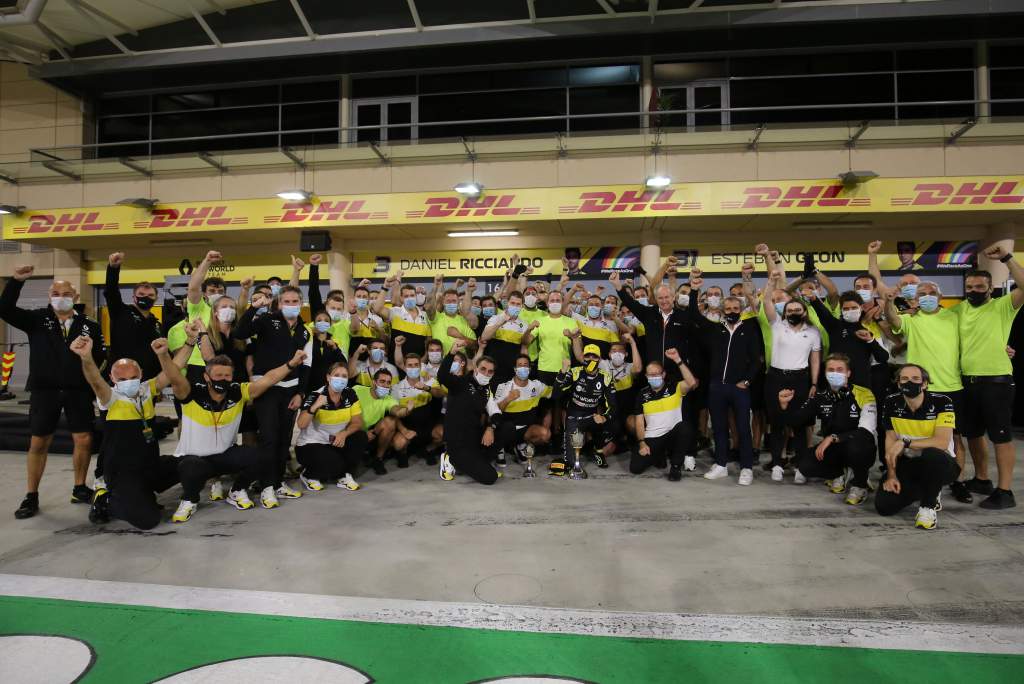
But not by much – and the season’s haul included three podiums between Daniel Ricciardo and Esteban Ocon, the first the team had scored since Renault’s return in 2016.
The RS20 retained the monocoque of the 2019 car but featured a new much slimmer nose, cupped by a long cape beneath. It brought the front end more visually up to date and had been conceived by the Nick Chester-led technical team prior to his departure in December 2019, just before the arrival of his replacement Fry in February.
Similarly, the former chief of aero Pete Machin was replaced in November by Dirk de Beer. Chester and Machin were casualties of the disappointing form of the 2019 car, given the big upgrade in facilities used in its creation. But the ‘Mk2’ version they created, as raced this year, showed their efforts in a better light.
A year ago team executive director Marcin Budkowski outlined how the shortcomings of that 2019 car seemed to be rooted in a front-end architecture that was unresponsive to aerodynamic development.
“The car proved stubborn in certain areas to development,” he said. “Development around the bargeboards did not bring as much performance as they should have.
“With our front wing and endplates, one way gives you better stability but worse control of the wheel wake and maybe we missed some of that early on, and as usual it’s not only a front wing; it’s front wing, nose, chassis winglets, bargeboards and everything. That whole system has to work together and it’s fair to say we might have missed something there.
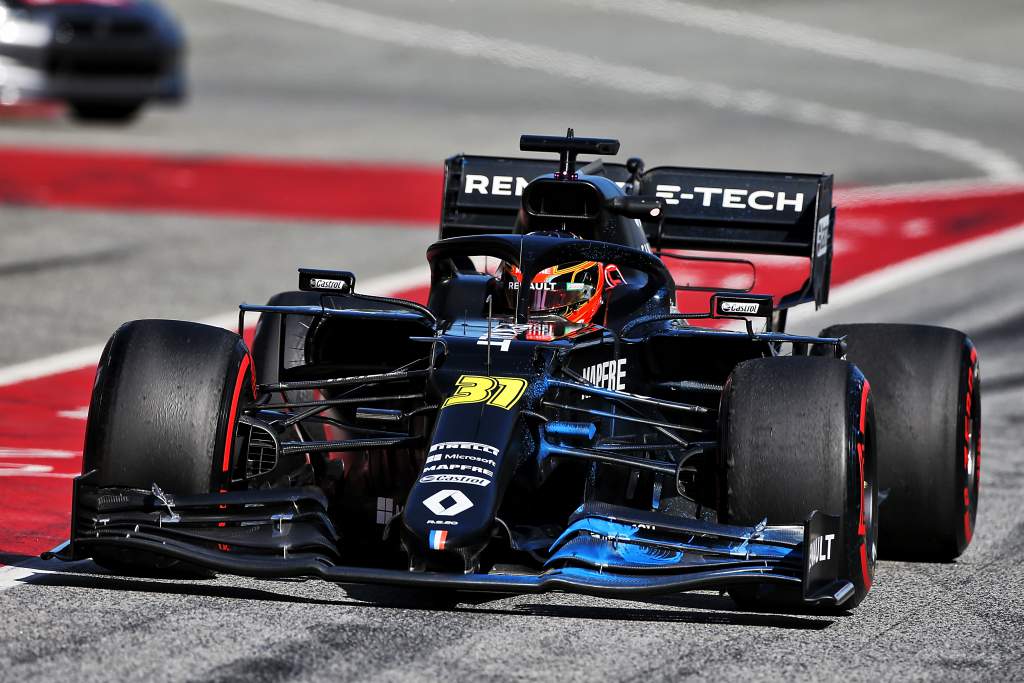
“The problem when you develop the front of the car around a concept, it’s more difficult to change. It’s not only changing the front wing; if you just did that you’d go slower. So you’d have to change the whole front of the car.”
Which is exactly what was done to create the RS20. In addition to a Mercedes-style slim nose, the monocoque just aft of the nose was higher, allowing the upper wishbones to be raised even compared to those of the 2019 car, which were already on hub extensions at the outboard end.
Those extensions stretched further on this car, lifting up that top wishbone to clear a better path for the airflow, allowing the vortices created (from the Y250 part of the wing and from the cape) to be more powerful – thereby removing that built-in limitation of the 2019 car.
The narrow nose facilitates the cape turning the airflow to the bargeboards earlier, reducing the tendency for it to detach through being asked to turn within too short a distance.
New technical director Fry could see even before the car hit the track that it was going to work much better.
“There had been some great work over the winter period and when you looked at the aero map of last year’s car and this year’s, there was some outstanding gains in some important areas,” said Fry.
“The initial performance we saw was there in the aero map even before going testing.
“You could see in ’19 if you went to a circuit with high-speed corners it kind of didn’t like them. That was an area of focus and certainly seemed to pay dividends.
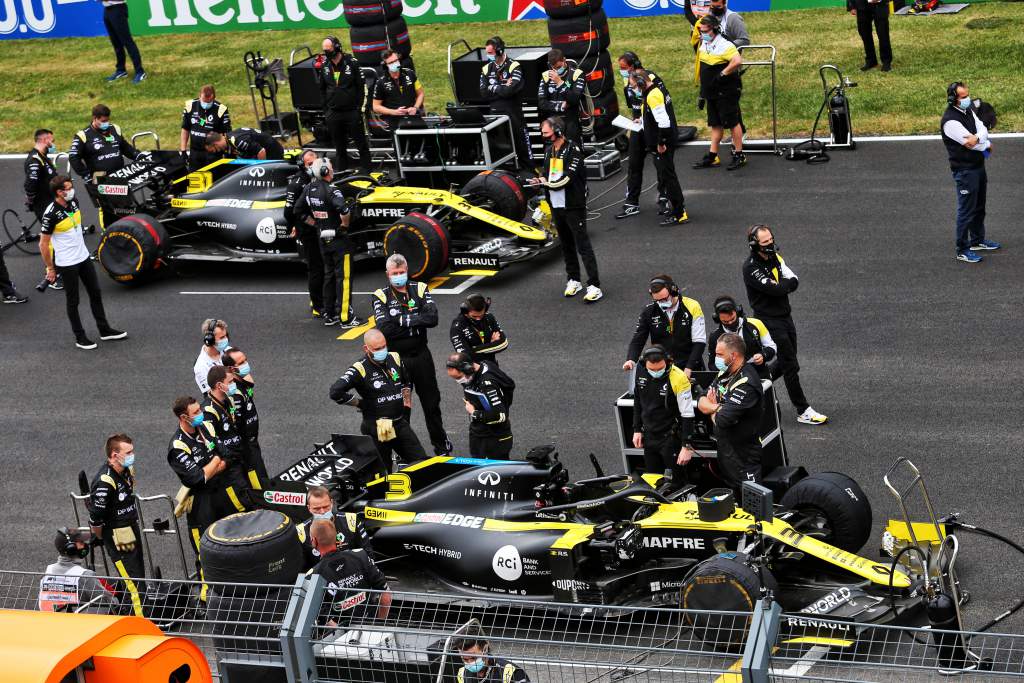
“I think everyone was a bit worried going to Austria which was the worst race last year and starting with two races there at the start of the season.
“Although we struggled a bit, relative to the year before it was clear there were some reasonable improvements and obviously we’d been working in trying to get the car working at all types of circuit.”
That 2019 car only really went well on low-downforce types of track, a function of competitive horsepower and the lower drag associated with a shortfall in downforce.
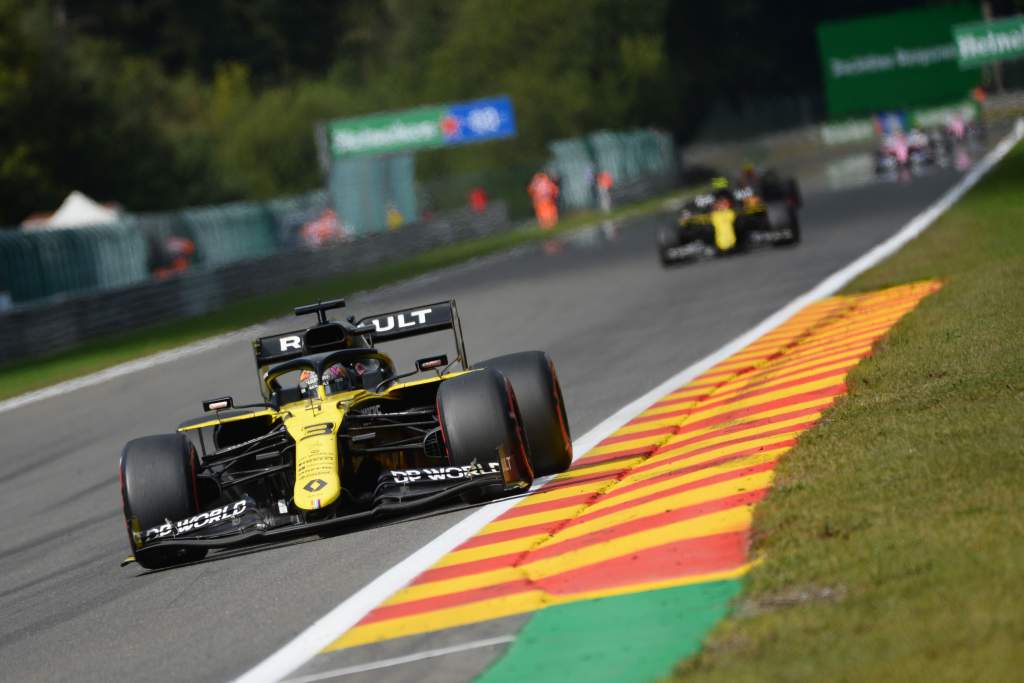
This year the power unit fell a little further behind, relative to the improved Mercedes (by around 15-18bhp according to paddock GPS-based estimates). Yet the car was closer to the pace regardless, underlining the aero gains made.
But in the first part of the season, it did look as though the ghost of those traits remained. The RS20 was less competitive at the downforce-demanding Hungaroring than it had been in Austria. The car went well at Silverstone, which since the advent of the wider cars of 2017 has become a track where drag is a relatively more powerful differentiator than downforce.
It then struggled at the downforce-demanding Barcelona and absolutely flew at the low drag-rewarding Spa (where Ricciardo finished a charging fourth and set fastest race lap).
Fry accepts there was some 2019 DNA in this pattern but that it was not inbuilt into the car and that once certain things had been understood about how this year’s car responded to set-up, its operating parameters became wider.
“The second Silverstone was the first time we’d looked reasonably strong in qualifying,” he points out.
“There were some new parts on the car at the first Silverstone but we understood better how to use them [in the second Silverstone race].

“Spain we struggled at but again it taught us something about how the car liked to be set up.”
Although the pace relative to the team’s immediate competitors McLaren and Racing Point ebbed and flowed in the second half of the season, there was not any particular struggle evident on downforce-demanding tracks. That no longer seemed to be the key differentiator.
With the exception of Istanbul, where it struggled to an extreme degree on the low-grip, low-temperature surface, every race post-Monza the car qualifying below its seasonal average (see graph below), indicating that it was continuing to make gains in development. The bargeboard development from Mugello onwards proved particularly fruitful – thereby proving the ghost of the ’19 car had been laid to rest. The Ricciardo podiums at the Nurburgring and Imola were the immediate reward of that.
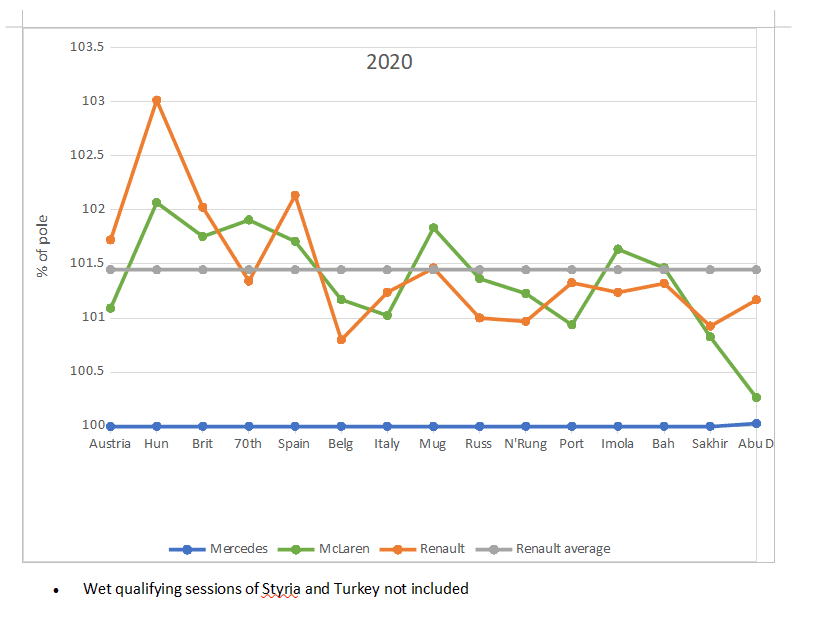
Fry reserves particular praise for Renault’s outgoing driver Ricciardo in his contribution to the team’s progress.
“He’s outstanding,” Fry said.
“Very quick, sensible but look at the way he motivates a team. It often gets forgotten.
“Even when you’ve had a session that’s been disappointing he’s good at seeing what we’ve learned, what the benefits area and we’ll do better tomorrow. Which is a good way of pulling that sort of crew and team together.
“Pretty exceptional really.”
With Ricciardo gone, that responsibility falls now onto the shoulders of Ocon and the returning Fernando Alonso. Next season will be an interesting case study in that regard.





